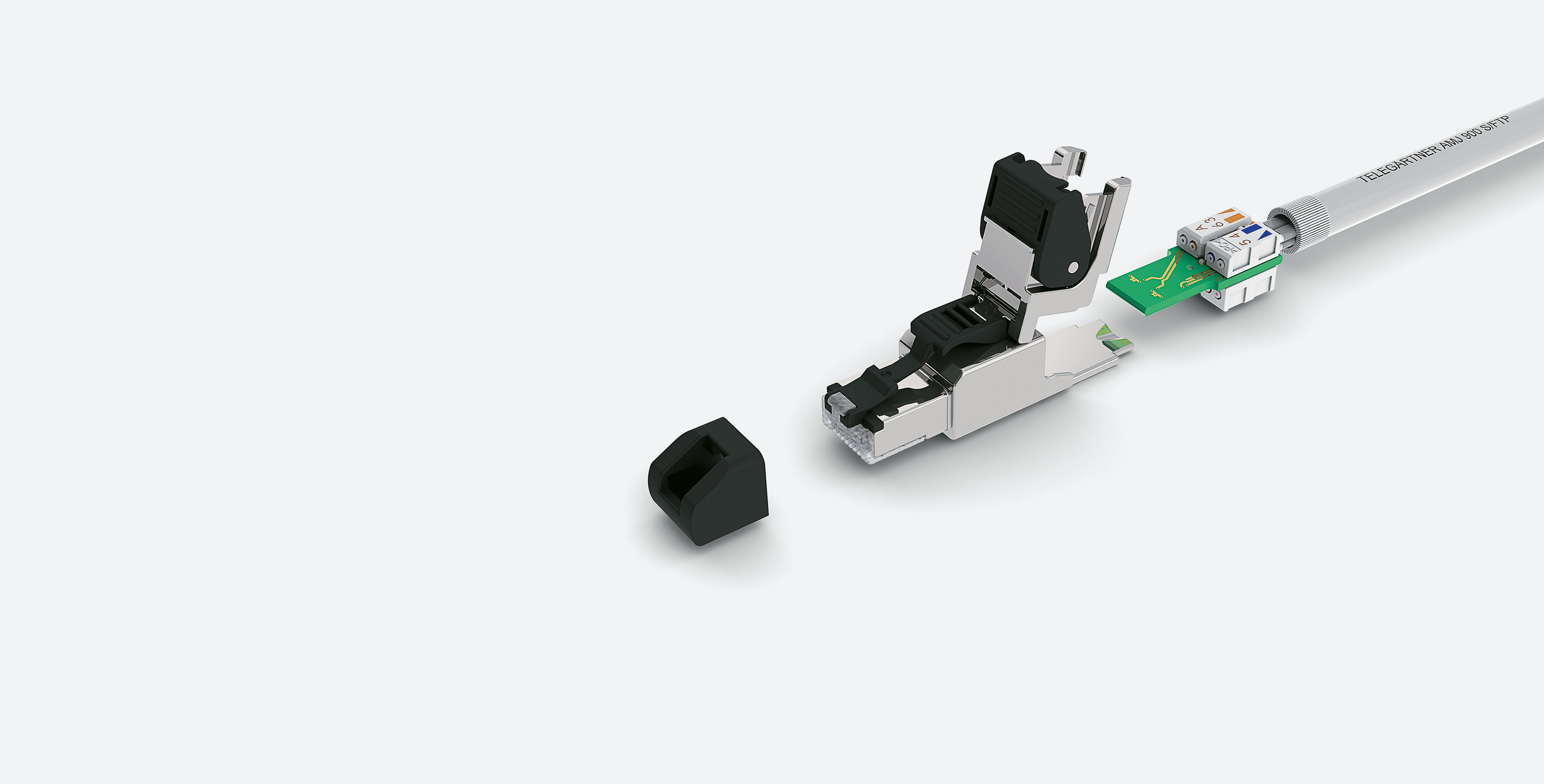Ever-higher transmission
The American ANSI/TIA (working group TR42.7) and the international ISO/IEC (JTC1 SC25 WG3) have developed a total of three different versions of a new component category „8“ to date, so one encounters a wide variety of opinions and manufacturer claims. With this article, Telegärtner is continuing its tradition of presenting technical facts in a neutral, clear and easy-to-understand manner.
The trend to ever-higher transmission rates is growing due to rapidly increasing use of intelligent mobile devices. That puts more and more pressure on backbone networks and data centres to handle a literal flood of data. The data rates of ten gigabits per second offered by the 10GBASE-T variant of Ethernet are in many cases simply no longer sufficient. Faster alternatives are available using twinax cables or optical fibre, but the link lengths permitted by twinax are too short and the cost of fibre optics often too high for full-area coverage. Connecting multiple 10GBASE-T links to a single logical connection is possible with suitable protocols, but that requires many ports and therefore a lot of space – both in limited supply in data centres.
Performance Capabilities
The IEEE (Institute of Electrical and Electronics Engineers, located in the United States) have reacted to this need and have developed the Ethernet variants 25GBASE-T with 25 Gbit/s and 40GBASE-T with 40 Gbit/s transmitted over twisted-pair cables. Both variants are based on the familiar 10GBASE-T approach, but the higher demands on the insertion loss budget meant that the maximum channel length is only 30 metres, so both new Ethernet variants are primarily suitable for data centres, server rooms and connections between switches.
Requirements for cabling components go far beyond the performance capabilities of the categories 6A and 7A. The American ANSI/TIA (working group TR42.7) and the international ISO/IEC (JTC1 SC25 WG3) have developed a total of three different versions of a new component category 8, so one encounters a wide variety of opinions and manufacturer claims.

Categories 8, 8.1 und 8.2
In the United States, the ANSI/TIA standardisation body specifies Category 8 cabeling components. They are backwards-compatible with the RJ45 jacks of Categories 6A, 6 and 5e according to ANSI/TIA-568-C.2.
The international standards bodies ISO and IEC specify even two globally valid variants: Categories 8.1 and 8.2. ISO/IEC Category 8.1 components are used to build class I links. They are backward-compatible with the RJ45 connector interface for Categories 6A, 6 and 5 specified by ISO/IEC 11801 and EN 50173.
ISO/IEC Category 8.2 components are used to build class II links. The standard defines different connector
interfaces that are not compatible with one another. Category 8.2 components have a larger headroom than
Category 8.1 components and are backward-compatible with Category 7A and 7 components with the appropriate plug. Category 8.2 connector interfaces are not backward-compatible with the RJ45 jacks of existing
cabling.
TIA and ISO/IEC have harmonized the specifications regarding maximum frequency, link length and maximum number of connectors in a link.
Link models in practice
The 30-metre maximum link length is divided into 24 metres of horizontal cable and at most 3 metres for patch cords on both ends. A link may contain up to two connections (2-connector channel). The direct connection of devices (Direct Connect, or end-to-end link) is also supported. In this case, the devices, for example a switch and a server, are connected directly by the cable with field assembly plugs at both ends.
RJ45-compatible plug
The manufacturers of active equipment have spoken for an RJ45-compatible plug configuration, and therefore for the international use of Category 8.1. This solution is backward-compatible with the billions of RJ45 connections installed worldwide.
Example of a field assembly RJ45 plug (Telegärtner MFP8) that can be used to connect devices such as switches and servers directly with the horizontal cable (Direct Connect).
Important standards
- IEEE 802.3bq for 25GBASE-T and 40GBASE-T
- ANSI/TIA-568-D
- ISO/IEC 11801-1:2017-11
- EN 501873-1:2018-10
ISO/IEC 11801 now follows the six-part design of EN 50173 for generic cabling systems in different types of buildings. Other standards were also integrated:
- ISO/IEC 11801-1 Part 1: General Requirements (supersedes ISO/IEC 11801 of 2002)
- ISO/IEC 11801-2 Part 2: Office premises (supersedes ISO/IEC 11801 of 2002)
- ISO/IEC 11801-3 Part 3: Industrial premises (replaces ISO/IEC 24702)
- ISO/IEC 11801-4 Part 4: Single Tenant Homes (replaces ISO/IEC 15018)
- ISO/IEC 11801-5 Part 5: Data Centers (replaces ISO/IEC 24764)
- ISO/IEC 11801-6 Part 6: Distributed Building Services (new standard)
Telegärtner: Your competent system supplier
As an innovative, competent system supplier, Telegärtner have their own very modern test laboratory for the testing of development samples, prototypes and series products. Telegärtner test equipment exceeds the requirements of applicable standards by far. Impressive examples are the Direct Probe used to test RJ45 components directly without diversion through coaxial test leads, providing reliable precision measurements, or the world‘s first test adapter for Category 6A RJ45 patch cords. Many of the test adapters used by independent measurement and testing laboratories originated at Telegärtner.
The latest test technology in the Telegärtner laboratories



